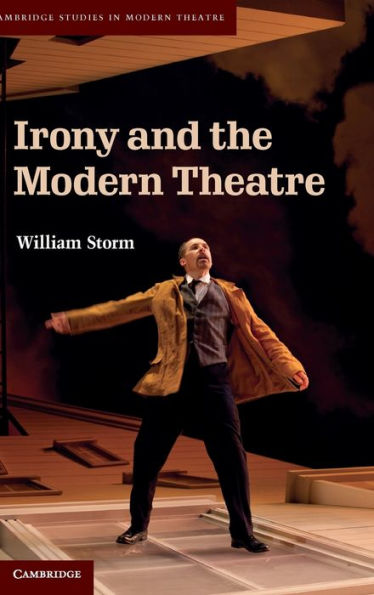Irony and the Modern Theatre
Irony and theater share intimate kinships, not only regarding dramatic conflict, dialectic, or wittiness, but also scenic structure and the verbal or situational ironies that typically mark theatrical speech and action. Yet irony today, in aesthetic, literary, and philosophical contexts especially, is often regarded with skepticism – as ungraspable, or elusive to the point of confounding. Countering this tendency, Storm advocates a wide-angle view of this master trope, exploring the ironic in major works by playwrights including Chekhov, Pirandello, and Brecht, and in notable relation to well-known representative characters in drama from Ibsen's Halvard Solness to Stoppard's Septimus Hodge and Wasserstein's Heidi Holland. To the degree that irony is existential, its presence in the theater relates directly to the circumstances and the expressiveness of the characters on stage. This study investigates how these key figures enact, embody, represent, and personify the ironic in myriad situations in the modern and contemporary theater.
1100479704
Irony and the Modern Theatre
Irony and theater share intimate kinships, not only regarding dramatic conflict, dialectic, or wittiness, but also scenic structure and the verbal or situational ironies that typically mark theatrical speech and action. Yet irony today, in aesthetic, literary, and philosophical contexts especially, is often regarded with skepticism – as ungraspable, or elusive to the point of confounding. Countering this tendency, Storm advocates a wide-angle view of this master trope, exploring the ironic in major works by playwrights including Chekhov, Pirandello, and Brecht, and in notable relation to well-known representative characters in drama from Ibsen's Halvard Solness to Stoppard's Septimus Hodge and Wasserstein's Heidi Holland. To the degree that irony is existential, its presence in the theater relates directly to the circumstances and the expressiveness of the characters on stage. This study investigates how these key figures enact, embody, represent, and personify the ironic in myriad situations in the modern and contemporary theater.
120.0
In Stock
5
1

Irony and the Modern Theatre
266
Irony and the Modern Theatre
266
120.0
In Stock

Product Details
| ISBN-13: | 9781107007925 |
|---|---|
| Publisher: | Cambridge University Press |
| Publication date: | 05/05/2011 |
| Series: | Cambridge Studies in Modern Theatre |
| Pages: | 266 |
| Product dimensions: | 5.90(w) x 9.00(h) x 0.80(d) |
About the Author
From the B&N Reads Blog
